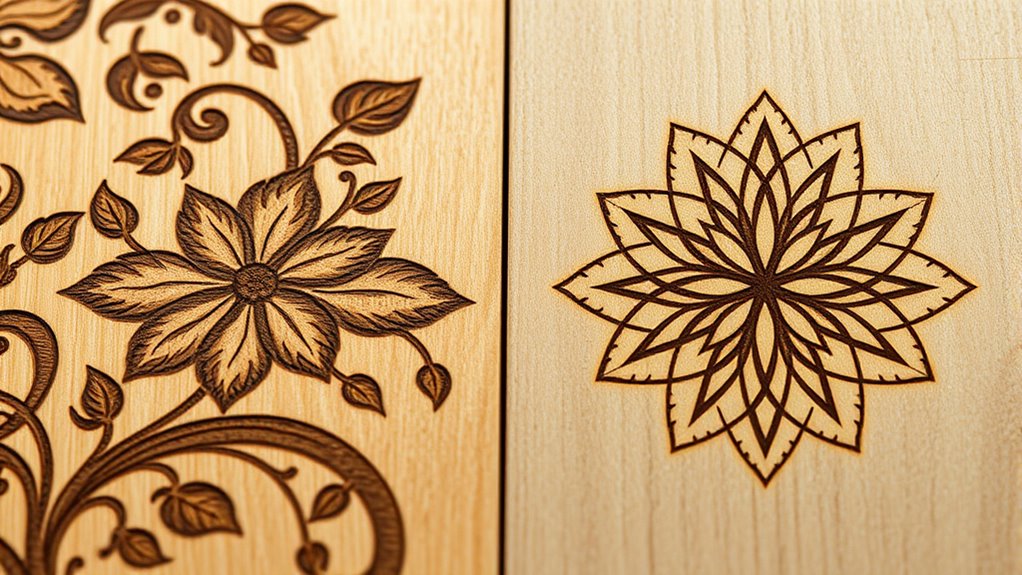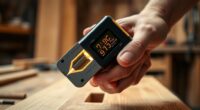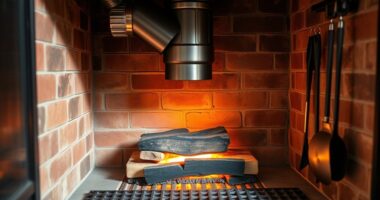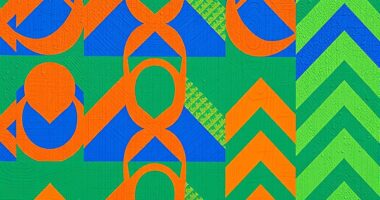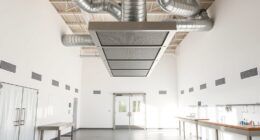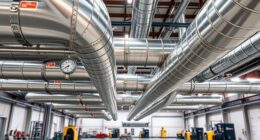If you want sharp, highly detailed designs, laser engraving is the better choice. It offers precise control and creates crisp, fine lines with consistent results, making it ideal for intricate images and text. Pyrography, on the other hand, provides a more textured, handcrafted look with softer edges. To discover which method suits your project best and learn more about their differences, keep exploring the options available.
Key Takeaways
- Laser engraving produces highly detailed, sharp lines ideal for intricate designs, whereas pyrography offers more organic, textured effects.
- The digital precision of laser engraving ensures consistent, crisp results, while pyrography’s handcrafted process results in slight variations.
- Laser technology allows for fine detail and complex images, surpassing the limitations of manual pyrography shading and line work.
- For projects requiring sharp, precise details, laser engraving is the superior choice over pyrography.
- Pyrography emphasizes artistic texture and rustic charm, but it cannot match laser engraving’s sharpness and fine detail.

When choosing between laser engraving and pyrography, understanding their differences can help you decide which method best suits your project. One of the key factors to contemplate is the level of detail and sharpness each technique can achieve. Laser engraving offers exceptional precision control, allowing you to create intricate, clean lines with remarkable accuracy. This precision enables you to produce highly detailed images and fine text that are difficult to replicate with traditional methods. If your project demands sharp, crisp lines and complex designs, laser engraving is often the superior choice.
Laser engraving provides precise, detailed lines ideal for complex designs and sharp images.
Pyrography, on the other hand, is a more manual process that relies on controlled heat applied with a specialized tool. While it provides a certain artistic versatility, it doesn’t quite match the razor-sharp detail achievable with lasers. Instead, pyrography excels at producing warm, textured effects that impart a handcrafted feel. It’s ideal for creating organic shading, subtle gradients, and a rustic aesthetic. However, if you’re aiming for precision control over minute details, pyrography can be limiting. The artist’s skill plays a significant role in determining the sharpness, but even the most talented practitioners may find it challenging to match the exactness of laser engraving.
Laser engraving’s ability to deliver consistent and repeatable results makes it especially valuable for projects requiring uniformity, such as branding, jewelry, or personalized gifts. Its digital precision means you can easily replicate a design multiple times without losing detail. Conversely, pyrography is more suited for one-of-a-kind pieces or artistic endeavors where each item can have slight variations that add to its charm. If your goal is to produce highly detailed, sharply defined images, laser engraving’s technological edge will serve you best.
That said, both methods have their strengths. While laser engraving offers unmatched sharpness and control, pyrography allows for a more organic, artistic touch that emphasizes texture and warmth. Your choice depends largely on whether your project prioritizes exact detail or artistic expression. If you need crisp, precise lines with consistent results, laser engraving is the way to go. But if you value the handcrafted, tactile quality that comes with manual work, pyrography will give your project a personal and unique character. Ultimately, understanding the capabilities and limitations of each method helps you select the best approach to achieve your desired outcome.
Frequently Asked Questions
Can Laser Engraving Be Used on All Types of Wood?
You might wonder if laser engraving works on all types of wood. Generally, it can, but the wood grain and engraving depth affect the results. Softer woods like pine or cedar respond well, producing clear images, while harder woods may require adjustments to prevent burning or uneven lines. Always test on a small piece first to see how the grain and depth influence the final appearance.
What Safety Precautions Are Necessary for Pyrography?
When doing pyrography, you need to prioritize safety. Always wear proper safety gear like masks, gloves, and eye protection to avoid burns and fumes. Make sure your workspace has good ventilation to prevent inhaling smoke and harmful particles. Keep a fire extinguisher nearby, and work in a well-ventilated area. Following these precautions helps protect your health and keeps your project safe and enjoyable.
How Does Surface Texture Affect Engraving Sharpness?
Surface texture considerably impacts engraving sharpness. If you work on surfaces with high surface roughness, the details might blur or become less precise. Likewise, material porosity can cause uneven burn lines, reducing clarity. To achieve sharper details, you should choose smoother surfaces and less porous materials. This way, your engraving will be more defined, regardless of whether you’re using pyrography or laser engraving techniques.
Are There Differences in Color Retention Between the Methods?
Like a painter blending hues on a canvas, your choice affects color retention. Laser engraving typically offers better color vibrancy and a more consistent finish, thanks to its precise control. Pyrography may fade over time, affecting finish durability and reducing color vibrancy. So, if enduring, vivid colors matter most, laser engraving is your best bet for sharp, lasting results.
What Is the Typical Cost Difference Between Laser Engraving and Pyrography?
When comparing costs, laser engraving typically has a higher price due to equipment and setup expenses, while pyrography is more affordable initially. Price factors include machine quality, project complexity, and production volume. If you need detailed, consistent results, expect to pay more for laser engraving. However, for smaller or personalized projects, pyrography offers a cost-effective option, making it ideal if you’re working within a budget.
Conclusion
So, as you stand at this crossroads, picture the intricate lines your choice could reveal. Will you embrace the precision of laser engraving, where every detail is razor-sharp? Or will you summon the rustic charm of pyrography, where warmth and character dance in every stroke? The decision isn’t just about technique—it’s about the story your artwork will tell. Whichever path you choose, one thing’s certain: your masterpiece is waiting to be disclosed in stunning detail.
